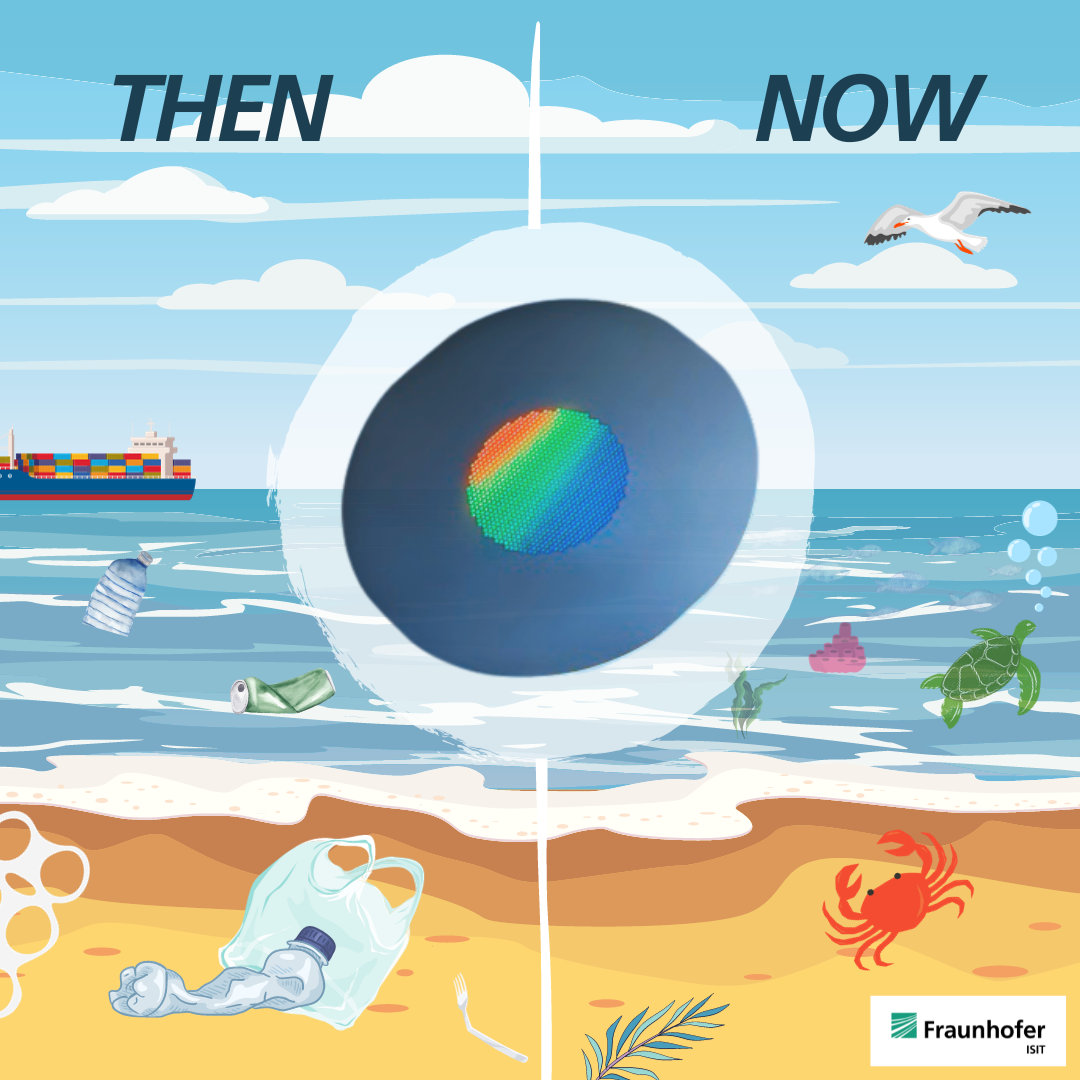Autorin: Frauke Höller
High-tech filters to enable detection of the smallest plastic particles in Schleswig-Holstein's waters
A new research project entitled "Size is important 2" aims to detect nanoparticles and plastic in environmental samples using a combination of high-tech filters and a standardizable design. The Fraunhofer Institute for Silicon Technology and the Alfred Wegener Institute are intensifying their cooperation and using semiconductor technologies to track down even the smallest environmental pollutants, funded by the Schleswig-Holstein Ministry of Economic Affairs.
Plastic waste is becoming an immense and incalculable problem in the world's oceans. The size of plastic waste ranges from thin nets that strangle fish to large pieces of plastic that are later found in the stomachs of birds or whales. However, plastic particles that are invisible to the naked eye pose a particular problem: Micro- and nanoplastics.
With sizes ranging from several micrometers to deep into the nanometer range, plastic particles form a significant part of the intermediate stage in the process of decomposing plastic waste into the smallest components in the wild. Once this waste has been created, it is practically impossible to capture due to its minimal size. In addition to polluting the oceans, plastic waste also poses a threat to humans and animals: The smaller the particles, the deeper they can penetrate into organisms. The smallest particles are able to migrate through cell walls and have been linked in scientific studies to heart disease, diabetes and infertility, for example.
The challenge in detecting the effects of nanoplastics in humans and animals is the detection and analysis of the particles, as they are difficult to immobilize and identify. This is where the "Size is important 2" project, a collaboration between the Fraunhofer Institute for Silicon Technology (ISIT) and the Alfred Wegener Institute, Helmholtz Center for Polar and Marine Research (AWI), comes in. The project participants will combine high-tech filters with a standardizable design for various analysis methods so that nanoplastic particles can be reliably identified. "In our project, we want to develop a new type of silicon filter membrane with nano-pores and evaluate it together with the AWI for the extraction of plastic particles from surface waters in Schleswig-Holstein," reports Dr. Michael Mensing, a scientist at ISIT: "Today's filters have randomly arranged pores and also make it difficult to examine plastic particles, as they are often made of plastic themselves. With the help of our semiconductor technologies, we can place millions of pores at perfect distances on silicon filters. If we then have the plastic particles examined at the AWI, we can investigate their origins and effects."
The silicon membrane, which is adapted to the standard dimensions of material science and filter manufacturers, has evenly distributed pores with diameters of just a few hundred nanometers. The filters are produced in the Fraunhofer ISIT's clean rooms, which are otherwise used to manufacture semiconductor chips and microsystems. A built-in coordinate system makes it possible to find individual nanoscale particles and characterize them using various methods of materials science. The AWI uses these filters with the help of its extensive analysis park and samples the coasts of Schleswig-Holstein and thus makes a risk assessment of their occurrence.
Over the next few years, ISIT and AWI will work together to make the filters available to research institutions, universities and companies in Schleswig-Holstein in order to promote innovative approaches to plastic detection and filtration in the region.
 Fraunhofer Institute for Silicon Technology
Fraunhofer Institute for Silicon Technology